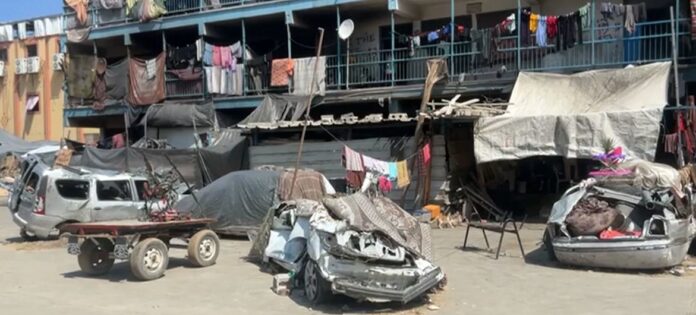Ms. Wateridge spoke from an UNRWA school in Gaza City, in northern Gaza, where UN humanitarian missions have faced extreme challenges in delivering supplies to besieged areas like Jabalia for nearly 50 days.
Louise Wateridge: Distressing accounts from families who fled Jabalia paint a grim picture of destruction and death, with limited access to food and water. They sought refuge in UNRWA schools only to face deadly airstrikes, leading to casualties among the sheltering population. Sadly, this has happened in six UN school shelters.
As people flee the besieged north seeking safety in Gaza City, they are haunted by danger and destruction. Death and destruction follow them like shadows.
UN News: What does Gaza City look like now?
Louise Wateridge: Every building as far as the eye can see is damaged or destroyed, giving glimpses of past lives now shattered. With around 300,000 people in Gaza City, shelter options are scarce, pushing many to seek refuge in UN facilities amidst the rubble.
As winter approaches, the urgent need for tarps, tents, blankets, and mattresses is critical to protect the vulnerable from the elements, as they currently lack basic necessities and are exposed to harsh conditions.
UN News
Louise Wateridge, UNRWA Spokesperson (middle) following the administering of polio vaccination in UNRWA’s Deir El Balah health center.
UN News: How challenging is it to provide aid?
Louise Wateridge: Access to besieged areas in north Gaza has been severely restricted for almost 50 days, leaving people without essentials like food and water, resorting to desperate measures like drinking from puddles to survive.
All eight UNRWA wells in Jabalia are damaged, hospitals and health clinics are struggling without medication, and humanitarian workers face constant risk with 247 colleagues having lost their lives in this war.
Are humanitarian workers still in danger?
Louise Wateridge: Every day. Gaza offers no safe haven, with colleagues and their families enduring injuries and fatalities as they strive to assist those in need. The escalating danger and challenges faced by humanitarian workers make their job increasingly perilous and difficult.




